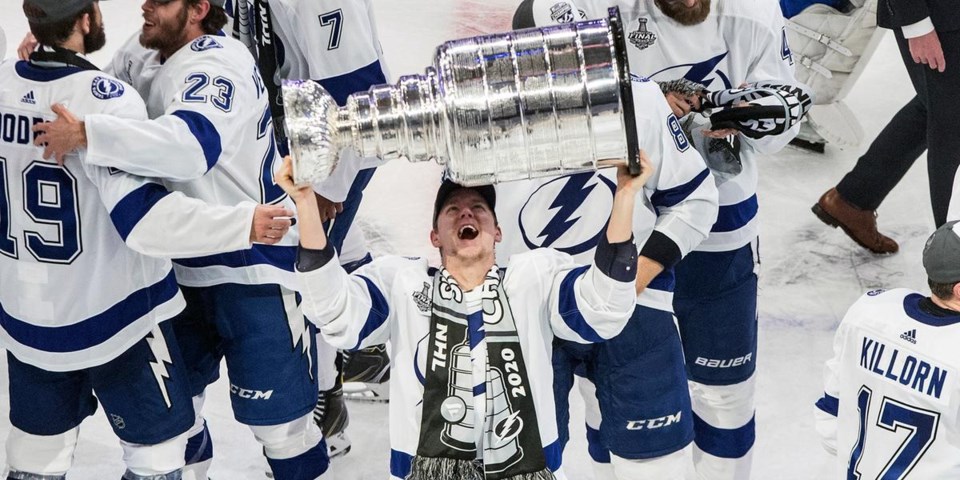The 2019-20 season began on October 2, 2019. Almost an entire year later, the season finally came to an end on September 28, 2020 with the Tampa Bay Lightning hoisting the Stanley Cup over the ice at Rogers Place in Edmonton.
Some suggested heading into the playoffs that this Stanley Cup would have an asterisk for the unusual circumstances. The NHL never actually finished their regular season, good teams got knocked out in the unprecedented qualifying round, and the unusual atmosphere in the playoff bubble erased home-ice advantage and left some players eager to get back home to their families.
The Lightning certainly don’t deserve an asterisk. The Cup was as difficult to win as ever. The players were kept apart from their families for two months. They battled through the playoffs without their captain, Steven Stamkos, apart from two minutes and 47 seconds in Game 3 of the Finals. He played five shifts and took one shot on goal, scoring his lone goal of the playoffs before sitting the rest of the game.
Sure, there was something a little off about the Stanley Cup celebration — there were no fans on-hand to boo Gary Bettman, for instance — but it was still a monumental accomplishment for the Lightning, who are just a season removed from being swept in the opening round of the playoffs by the Columbus Blue Jackets.
It was an even more monumental accomplishment for the NHL to even make that moment possible.
It seemed like an impossible undertaking: host the Stanley Cup playoffs in the middle of a global pandemic. There were dozens of plans and possibilities thrown around by the league and the player’s association before they landed on the return to action format they went with: a best-of-5 qualifying round followed by a full playoff schedule in a quarantine bubble in Edmonton and Toronto.
Full disclosure: I didn’t think they could pull it off. I was extremely skeptical that they could fully separate the players, coaches, officials, and training staff from all the people who would need to be involved that wouldn’t be quarantined: hotel staff, arena staff, cleaning crews, etc.
All it would take is one person in the bubble who was an asymptomatic carrier of COVID-19 to throw the entire thing into chaos. When members of the St. Louis Blues tested positive during their training camp, it seemed like that fear and skepticism was well-founded. What if players broke quarantine during the playoffs, even if just to pick up a food delivery like Richaun Holmes of the Sacramento Kings in the NBA? What if a hotel staff member went to a party one weekend and didn’t perfectly follow quarantine protocol in the hotel? What if, what if, what if?
Instead, the quarantine bubble worked perfectly. The NHL didn’t have a single positive COVID test for the duration of the playoffs, unlike in the NBA, MLB, and NFL.
Players kept in the quarantine bubble, even if they weren’t always happy about it. Everyone followed the rules, no one got sick, and a deserving team went home with the Stanley Cup.
That’s nothing less than a smashing success. Maybe, just this one year, Bettman didn't deserve the boos.
Now the NHL has a much tougher task ahead of them. After the Entry Draft and the opening of free agency, both of which take place next week, the NHL has to figure out how they’re going to hold the 2020-21 regular season.
The NHL has earned themselves some trust after these playoffs, but the example of other hockey leagues has shown the perils of storming ahead with a full-fledged regular season schedule. With a third wave of COVID-19 likely to hit the US in the fall and winter, the 2020-21 regular season will be a difficult nut to crack for the NHL’s front office.


.JPG;w=120;h=80;mode=crop)

.JPG;w=120;h=80;mode=crop)